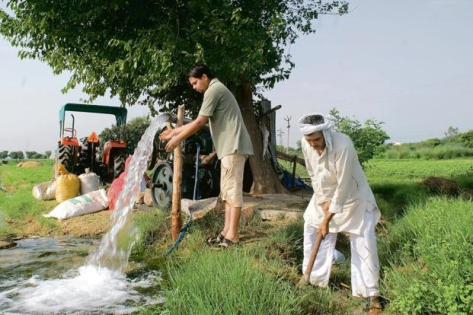
Bengaluru: Since 2002, Karnataka’s irrigation allocation has steadily increased from a little over ₹1,600 crore to around ₹16,000 crore in the current fiscal, showing an average annual increase of around 6%. But this rise has not translated into a higher irrigated area, which the government believes holds the key to the problems faced by farmers reeling under persistent droughts and failing monsoons.
The area under irrigation increased from around 2.45 million hectares in 2002 to around 3.1 million ha in 2016-17 from all sources, including canals, tanks, lift irrigation, tube and borewells. But this is still below 30% of the total agricultural area of around 10.7 million ha, which leaves most of the state’s farmers to the mercy of unpredictable rainfall.
Karnataka, home to the second most arid region in the country, has pumped in funds for the development of mega projects whilst neglecting traditional methods that researchers and experts say are a better bet.
The slow rate at which fresh areas are being brought under irrigation is deepening growing agrarian distress and intensifying the demand for farm loan waivers and increased minimum support prices—a campaign that is gaining traction ahead of the forthcoming general elections.
The H.D. Kumaraswamy-led coalition government in Karnataka has announced a ₹45,000 crore farm loan waiver, along with a fat allocation to irrigation with promises to complete several big ticket projects.
The slow pace of infrastructure work that successive governments have attributed to delays in land acquisition, forest and environment clearances, is not helping matters.
“Instead of pumping in mega billion dollars on big projects, importance should be given to traditional water harvesting systems,” Devinder Sharma, agricultural expert and analyst said.
He said states argue that lack of irrigation leads to lower agricultural productivity which in turn is fuelling suicides among farmers. “Why do farmers kill themselves in Punjab then,” Sharma asked.
Though successive governments, at least in Karnataka, have pledged to pursue long-term sustainable agricultural practices, allocations continue to favour large projects, which have already consumed several thousands of crores of rupees and decades of work.
This year, Karnataka declared 156 of the 176 talukas as drought-hit, forcing farmers to intensify demands for short- term interventions like loan waivers.
Our irrigation potential is around 4 million ha, said a senior official of the Karnataka water resources department. He was referring only to major and medium irrigation schemes. If minor, micro and all other forms of irrigation were introduced, about 60% of area could be brought under irrigation.
But the focus remains on realising the potential of another 1 million ha from major irrigation schemes that could cost at least ₹80,000-90,000 crore, the official added, emphasizing the predicament of the government that cannot afford to divert funds away from such projects and towards traditional harvesting techniques like tanks and lakes.
Posted on :
Jan 11, 2019